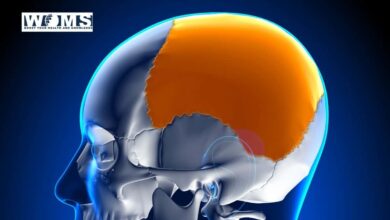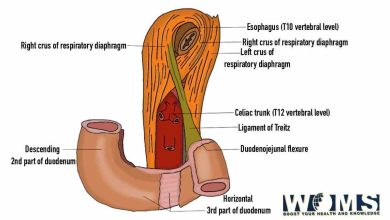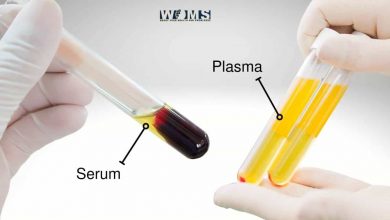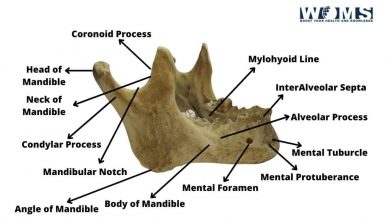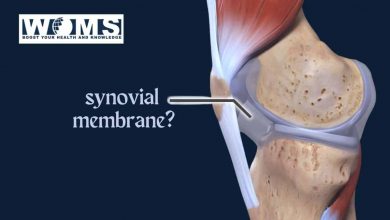Bone Marrow Edema Symptom: What It Means and How to Treat
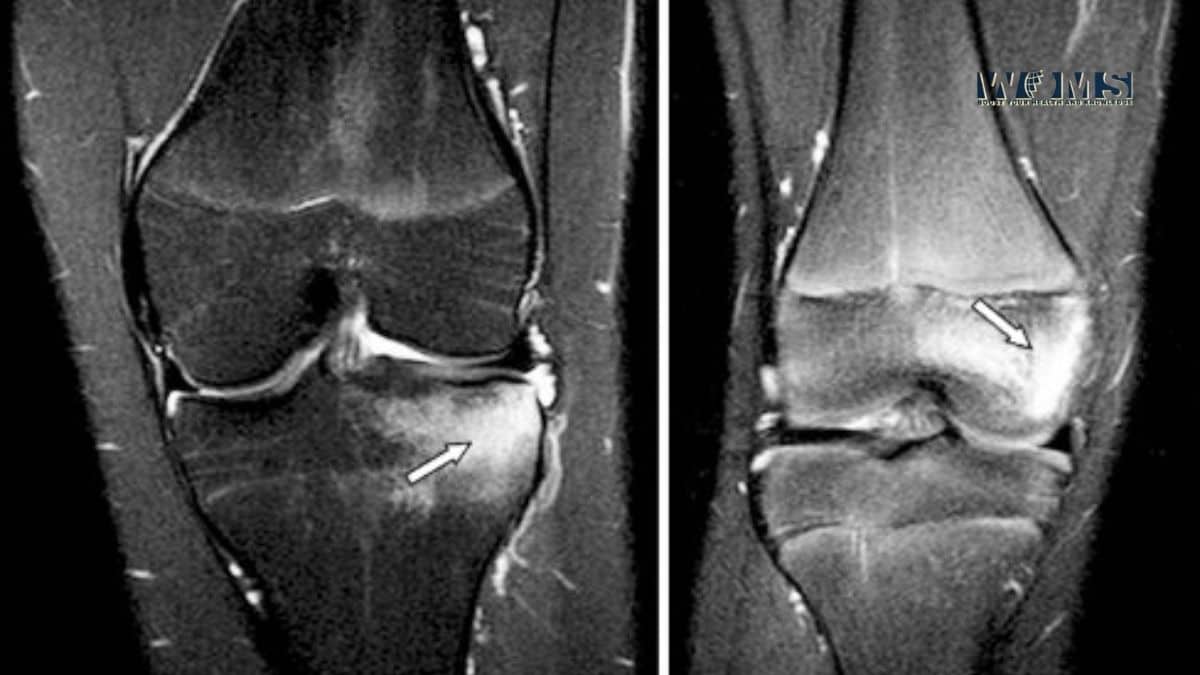
Bone marrow edema is a rare but serious condition affecting bone health. Bone marrow edema is not just a symptom of other conditions; it can also cause those conditions. It’s important to find out what’s causing your bone marrow edema, so you know what treatments will work best for you. In this blog post, we’ll discuss the symptoms and treatment options for patients with bone marrow edema!
What is bone marrow edema, and what are the symptoms?
Bone marrow edema is the accumulation of excess fluid in or around bone tissue. Symptoms might include swelling, pain, and stiffness in one area of your body, such as an arm or leg, sometimes there are no symptoms at all. Bone marrow edema can be caused by a serious condition like cancer that requires treatment to improve it; however, most of it’s cases are benign and don’t require treatment.
How is it diagnosed and treated?
Bone marrow edema is diagnosed by examining an individual’s bone marrow with imaging techniques like x-ray or MRI. Once diagnosed, the treatment of choice is to treat whatever underlying condition caused it in the first place. For example, if the individual has a fracture, they will need to immobilize the bone and heal. If the individual has an infection, they will be treated with antibiotics. In some cases, corticosteroids may also be prescribed to help reduce inflammation.
Early diagnosis and treatment are key in preventing further damage to the bone marrow and other surrounding tissues. With proper care, most people make a full recovery from this condition, if you are experiencing any of it’s symptoms, please consult your doctor for diagnosis and treatment.
What are the possible causes of bone marrow edema?
BME is often caused by osteoarthritis, a common form of arthritis that occurs when the cartilage protecting your bones begins to wear away. Other possible causes include:
- Atherosclerosis, or hardening of the arteries.
- Bone cancer.
- Tissue death resulting from injury or infection.
For example, if you sprain your ankle, the resulting inflammation can cause BME in that area.
If you have BME, your doctor will likely order imaging tests such as an MRI or a CT scan to help determine the underlying cause. Once the cause is identified, treatment may include pain relievers and anti-inflammatory drugs, physical therapy, or surgery. If you are diagnosed with it due to osteoarthritis, following your doctor’s instructions for managing arthritis will be important to prevent further damage to the bones and reduce symptoms.
Symptoms of bone marrow edema
It can cause a variety of symptoms depending on its location. However, common symptoms include pain, swelling, and stiffness in the affected area. The pain may be a dull ache or sharp and stabbing, worsening activity. Swelling can cause the skin over the bone to stretch, and you may notice that the area is warmer than usual. Stiffness makes movement difficult and can lead to tightness in the muscles around the joint. Ignoring it can further damage the bones and increase pain and disability. Early diagnosis and treatment are key to preventing these complications.
The most common symptom associated with it is localized tenderness over the affected area, which may increase during periods of increased physical activity. Swelling I local lymph nodes near where the inflammation occurs may present flu-like symptoms, including fever, chills, fatigue, loss of appetite, and weight.
Is bone marrow edema a stress fracture?
Bone Marrow edema is the preclude of an injury. Bone marrow edema is the inflammation of the bone marrow that can be caused by a stress fracture, overuse, or an infection.
Symptoms of it are a pain in the area where the inflammation is located, swelling, and tenderness to touch. The pain of bone marrow edema is usually worse when you put weight on the affected joint or muscle.
Does RA cause bone marrow edema?
It correlates with systemic inflammation, an important marker in the development of rheumatoid arthritis. Bone marrow edema does not correlate well with radiographic findings at times and, therefore, should also be interpreted cautiously because it may reflect disease activity rather than damage to joints over time.
Diagnosis: What Does It Mean?
A diagnosis of bone marrow edema means that chronic changes related to RA have affected the central part of bones where most red blood cell production occurs. The condition can also indicate possible osteonecrosis, which is the death of bone tissue due to lack of blood.
Bone Marrow Edema Treatment Options
There are no specific treatments; however, controlling inflammation with medications like methotrexate or biologics can sometimes help decrease its appearance in imaging studies. A rheumatologist can determine any risk related to osteonecrosis and develop a treatment plan based on individual factors.
The goal in treating bone marrow edema is improvement in symptoms depending upon what they may be (i.e., joint pain). The overall aim of therapy should always focus on decreasing disease activity as this will reduce symptom severity and preserve skeletal health over time. If there are complications such as osteonecrosis, specific treatments for that condition will be instituted.
If you are experiencing any symptoms of bone marrow edema, it is important to seek treatment right away. Treatment or bone marrow edema will vary depending on the condition’s cause. However, some common treatments include:
- Resting the affected joint(s)
- Ice packs/cold therapy
- Nonsteroidal anti-inflammatory drugs (NSAIDs)
- Corticosteroid injections
- Physical therapy
- Surgery, if necessary.
Bone marrow edema can be very painful, but it is important to remember that treatments can help relieve the symptoms. Following a healthy diet and exercise routine, maintaining a healthy weight, and wearing supportive shoes when participating in physical activity are all ways to help prevent bone marrow edema from occurring. If you are experiencing any symptoms of bone marrow edema, seek treatment right away.
What are 3 symptoms of rheumatoid arthritis?
Signs and symptoms of RA include
- Distal joint erosion
- swollen knuckles
- Malar rash.
What does edema look like on MRI?
On MRI, edema produces increased signal intensity on T-weighted images and decreased signal intensity on proton density or fat-saturated T-weighted images.
Typical locations of edema in the spine include the anterior epidural space, posterior epidural space, ligament flavum, facet joints, intervertebral foramen…
What does an abnormal bone marrow signal mean?
Abnormal marrow signal intensity on an MRI may be due to different processes. The most common causes are bone marrow edema, hematoma, and neoplasm.
- Bone marrow edema is the accumulation of fluid in the bone marrow spaces. This can lead to pain, swelling, and increased signal intensity on MRI. It is often seen in the setting of trauma, such as a fracture. Treatment usually involves rest and immobilization followed by physical therapy once symptoms resolve.
- Hematoma is bleeding into the bone marrow space. This can cause pain, swelling, and increased signal intensity on MRI. Treatment typically involves draining the blood clot and/or surgery to remove the source of bleeding.
- Neoplasm is a tumor, or cancerous lesion typically originates in the bone marrow. This can c use pain, swelling, and increased signal intensity on MRI and other symptoms depending on what type of neoplasm it is. Treatment involves surgery to remove the source of cancerous cells if possible with chemotherapy or radiation afterward for more extensive disease.
What causes bone marrow edema in the shoulder?
Marrow edema most often is associated with rotator cuff tear. A rotator cuff is a group of muscles and tendons that attach the shoulder blade to the upper arm bone (humerus). These muscles and tendons help lift your arm. A tear in the rotator cuff can cause pain, weakness, and swelling in the shoulder.
Other conditions, such as: may also cause marrow edema.
- Shoulder dislocation
- Arthritis
- Bursitis
- Infection
Are there any risks associated with bone marrow edema or its treatment?
There are some risks associated with bone marrow edema and its treatment. Some of these include:
- Increased risk for infection
- Infection at the injection site
- Fatigue, headache, malaise, nausea, vomiting
- Swelling in arms or legs due to fluid accumulation
- Temporary increase in blood sugar
- Rarely, an allergic reaction to the contrast material used in the MRI exam.
If you experience any of these symptoms after treatment, be sure to contact your doctor right away. Treatment options will vary depending on the individual and the cause of bone marrow edema. In most cases, however, treatment is relatively simple and can include a combination of rest, ice, and medications such as anti-inflammatory drugs or painkillers. Surgery may also be necessary in some cases. Talk with our doctor about the best course of treatment for you.
Can bone marrow edema be prevented from happening in the first place?
Bone marrow edema can be prevented from happening in the first place, but this is not always possible. Some of the ways to help prevent bone marrow edema include:
- Following a healthy diet and exercise routine
- Maintaining a healthy weight
- Wearing supportive shoes when participating in physical activity
- Avoiding repetitive motions or overuse of joints
- Treating any underlying medical conditions that may contribute to bone marrow edema
What are the possible complications of bone marrow edema?
- migration of the catheter
- displacement or fracturing of bone marrow
- infection at the injection site
- bleeding
- nerve damage
Other complications can include:
- damage to other organs due to the increased pressure in the area around the bone marrow edema
- Kidney failure results from decreased blood flow to the kidneys caused by compression of veins leading away from the kidney.
There are treatments for all these potential complications, so please talk to your doctor if you experience any problems after your injection.
Bone Marrow Edema Treatment:
If you are experiencing these symptoms, it is important to discuss treatment options with your doctor immediately to help get rid of the pain associated with bone marrow edema. There are many different treatments used for this condition, but some may include antibiotics or anti-inflammatory medications, which will reduce swelling in local lymph nodes near where the inflammation occurs. Physical therapy exercises may also be recommended by a physician if there has been damage done to ligaments, tendons, or muscles surrounding the affected area, as well as ice packs applied several times throughout each day to decrease localized tenderness over the affected region.
For chronic cases of bone marrow edema, surgery might be recommended to help remove the damaged bone and promote healthy healing. It is important to speak with a physician if you are experiencing any of the symptoms associated with this condition so that they can accurately diagnose the problem and provide relief from your discomfort.
How can you help your friends and family to help them learn more about this condition?
Here are also some things that friends and family can do to help make their loved one’s life easier while they’re dealing with bone marrow edema. For example, they can help keep track of any medications or treatments that the person is taking and offer moral support. It’s also important to remember that everyone deals with this condition differently, so don’t be afraid to ask your loved one how they’re doing and offer any help that you can.
If you or someone you know is dealing with bone marrow edema, it’s important to learn as much as possible about the condition. There are many excellent resources available online and from healthcare professionals. You can also talk to your friends and family about bone marrow edema and what they can do to help you cope.
Conclusion
Bone marrow edema is the build-up of fluid in the bone marrow. It can cause e pain, joint stiffness, or even arthritis if it affects areas like your knees and hips. Bone marrow edema symptom treatment depends on what’s causing it. If you have an injury, your doctor might give you a brace or cast to support the area and help it heal. If you have an infection, they might prescribe antibiotics. In some cases, surgery may be necessary.
Whatever the cause, bone marrow edema can usually be treated successfully with the right approach. So if you’ e experiencing any of these symptoms, don’t hesitate to talk to your doctor about what might be going on. They’ll be able to help diagnose the problem and get you on the road to recovery.
FAQs
What is bone marrow edema?
Bone marrow edema (BME) is when the bone marrow becomes inflamed. This can c use pain, swelling, and stiffness in the joints.
What are the symptoms of bone marrow edema?
The most common symptoms of BME include pain, swelling, and stiffness in the joints. You may al o experience a decrease in range of motion. You may notice a warm or red area over the joint in some cases.
How is bone marrow edema treated?
Treatment for BME typically includes rest, ice packs, and anti-inflammatory medications such as ibuprofen or aspirin. If the inflammation is severe, your doctor may prescribe corticosteroid injections or surgery.
What is the prognosis for bone marrow edema?
Most cases of BME are temporary and resolved with treatment. However, the condition may be chronic and require ongoing treatment in some cases.
Can bone marrow edema cause other health problems?
Yes, BME can lead to other health problems such as rheumatoid arthritis or osteoarthritis in some cases. It is important to seek medical attention if you experience any of the BME symptoms.
How common is bone marrow edema?
Bone marrow edema affects approximately one percent of the population. It occurs more often in women than men and is most commonly seen in people aged 30-50
